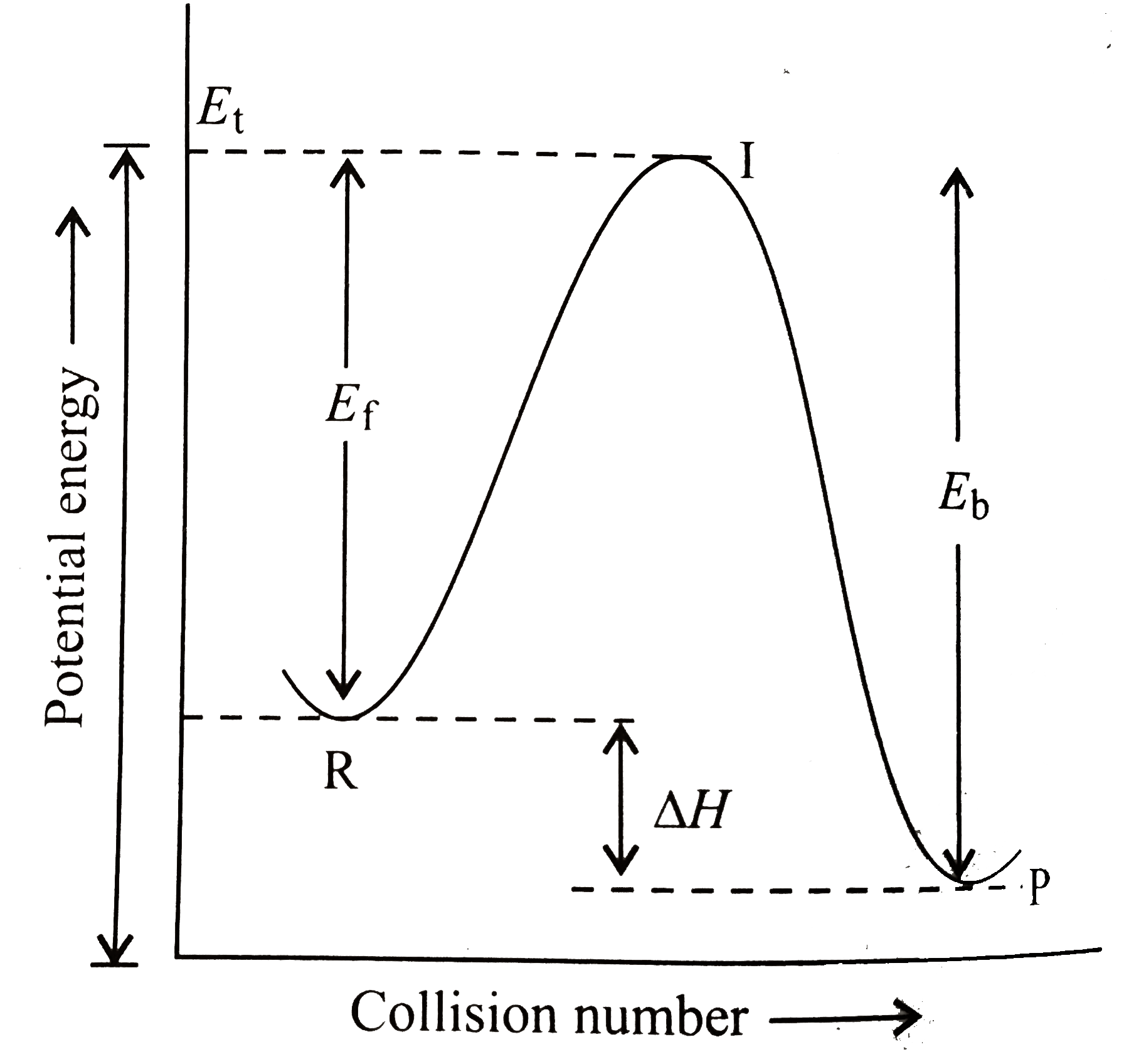What is Activation Energy (Ea)?Explain graph of reaction of activation energy and write about its probability.
The energy required to form the intermediate,called activated complex (C ).Is known as activation energy (Ea) or
The minimum energy required to convert reactant to the product is called kinetic energy of reaction.
Explanation of activation energy with the help of graph 2 mole.HI is formed by the reaction of 1 mol H2 with 1 mole I2
H2(g)+I2(g)→2HI(g)
According to Arrhenius ,this reaction can take place only when a molecule of hydrogen and a molecule of iodine collide to form an ustable intermediate.
It exists for a very short time and then breaks up to form two molecules of Hydrogen iodide.

The energy required to form this intermediate called activated complex (C ) ,is known as activaition energy (Ea)

Activated Energy (Ea)= (Potential energy of intermediate complex (C))-(Potential energy of reactants)
The probability of reaction and Ea
(i)The collision of molecules with more kinetic energy than Ea result into product
(ii)The collision of molecules with less kinetic energy than Ea do not form product.
(iii)Ea≥ energy of collide -molecule than product will form .
(iv)According to Arrhenius energy of activation and rate of reaction is related as
k=Ae(−Ea)/(RT) and In k=In A-EaRT
Topper's Solved these Questions
- CHEMICAL KINETICSBOOK - KUMAR PRAKASHANCHAPTER - CHEMICAL KINETICSEXERCISE - Section-A - Problem
1 Videos
- CHEMICAL KINETICSBOOK - KUMAR PRAKASHANCHAPTER - CHEMICAL KINETICSEXERCISE - Section-A - TRY YOURSELF
26 Videos
- BOARD EXAM QUESTION PAPER MARCH - 2020 BOOK - KUMAR PRAKASHANCHAPTER - BOARD EXAM QUESTION PAPER MARCH - 2020 EXERCISE - PART -B
23 Videos
- CHEMISTRY IN EVERYDAY LIFEBOOK - KUMAR PRAKASHANCHAPTER - CHEMISTRY IN EVERYDAY LIFEEXERCISE - SECTION - E (MCQs ASKED IN GUJCET/BOARD EXAM)
37 Videos
Similar Questions
Knowledge Check
If activation energy, Ea of the reaction is equal to RT then
AThe rate of reaction will be independent on initial concentration of reactant.BThe rate constant becomes approximately equal to 37% of the Arrhenius constantCThe rate of reaction becomes infiniteDThe rate of reaction always be first order.In the given graph the activation energy, Ea for the reverse reaction will be

Activation energy for the reverse reaction will beA100 kJ/moleB140 kJ/moleC60 kJ/moleD40 kJ/moleA colliison between reactant molecules must occur with a certain minimum energy before it is effective in yielding Product molecules. This minimum energy is called activation energy Ea Large the value of activation energy, smaller the value of rate constant k. Larger is the value of activation energy, greater is the effect of temperature rise on rate constant k.

Ef= Activation energy of forward reaction
Eb= Activation energy of backward reaction
ΔH=Ef−Eb
Ef= threshold energy
The activation eneries for forward and backward reactions in a chemical reaction are 30.5 and 45.4kJmol−1 respectively. The reaction isAExothermicBEndothermicCNeither exothermic nor endothermicDIndependent of temperature
What is activation energy? How is the rate constant of a reaction related to its activation energy ?
View SolutionExplain the terms:
Activation energy
View SolutionIf activation energy, Ea of the reaction is equal to RT then
View SolutionWhat is the source of activation energy in a photochemical reaction?
View SolutionA colliison between reactant molecules must occur with a certain minimum energy before it is effective in yielding Product molecules. This minimum energy is called activation energy Ea Large the value of activation energy, smaller the value of rate constant k. Larger is the value of activation energy, greater is the effect of temperature rise on rate constant k.

Ef= Activation energy of forward reaction
Eb= Activation energy of backward reaction
ΔH=Ef−Eb
Ef= threshold energy
The activation eneries for forward and backward reactions in a chemical reaction are 30.5 and 45.4kJmol−1 respectively. The reaction is
View Solution
